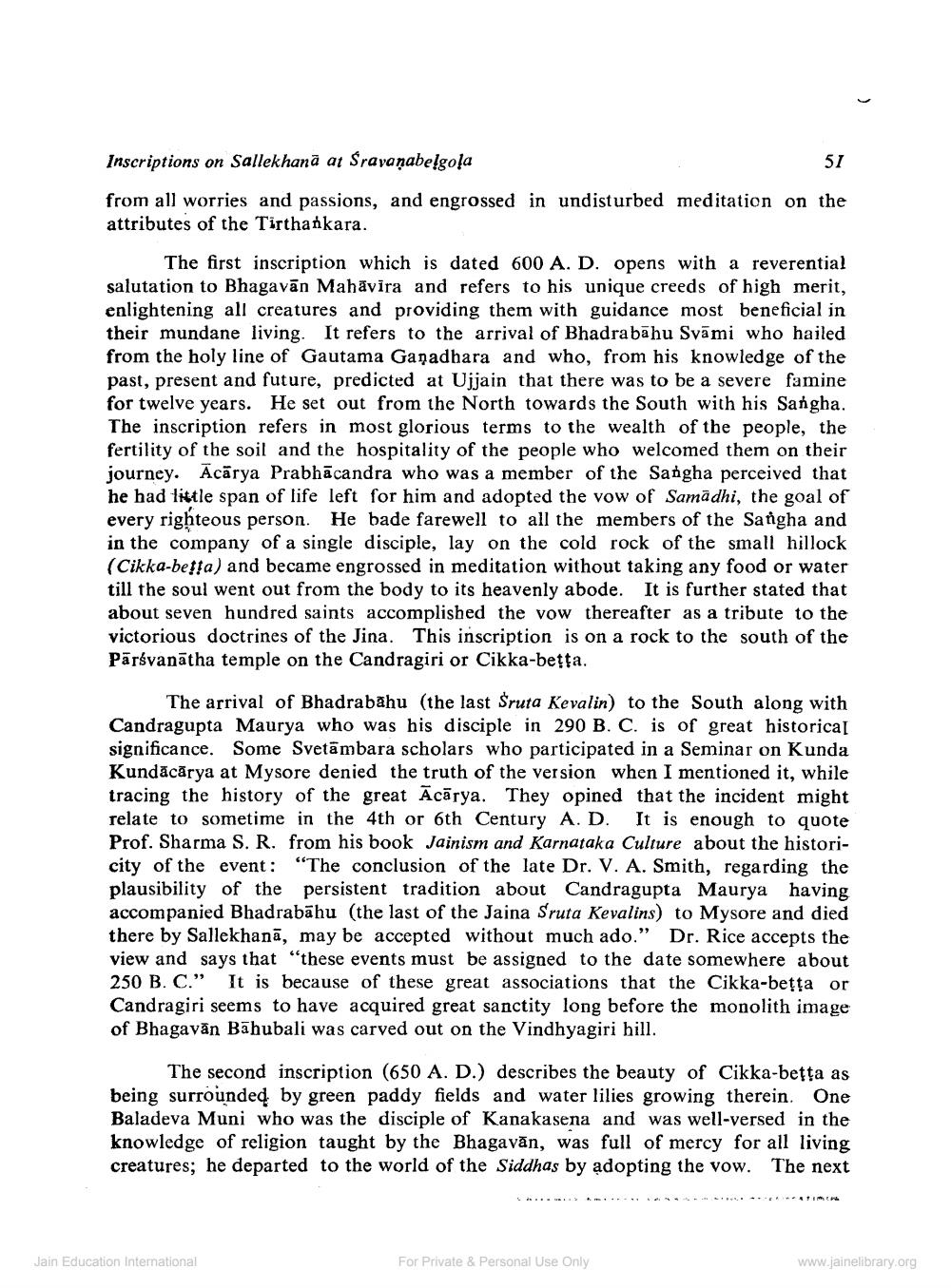________________
Inscriptions on Sallekhana at Srayaņabelgola
from all worries and passions, and engrossed in undisturbed meditation on the attributes of the Tirthankara.
The first inscription which is dated 600 A. D. opens with a reverential salutation to Bhagavān Mahāvira and refers to his unique creeds of high merit, enlightening all creatures and providing them with guidance most beneficial in their mundane living. It refers to the arrival of Bhadrabahu Svāmi who hailed from the holy line of Gautama Ganadhara and who, from his knowledge of the past, present and future, predicted at Ujjain that there was to be a severe famine for twelve years. He set out from the North towards the South with his Sangha. The inscription refers in most glorious terms to the wealth of the people, the fertility of the soil and the hospitality of the people who welcomed them on their journey. Ācārya Prabhācandra who was a member of the Sangha perceived that he had little span of life left for him and adopted the vow of Samadhi, the goal of every righteous person. He bade farewell to all the members of the Sangha and in the company of a single disciple, lay on the cold rock of the small hillock (Cikka-beffa) and became engrossed in meditation without taking any food or water till the soul went out from the body to its heavenly abode. It is further stated that about seven hundred saints accomplished the vow thereafter as a tribute to the victorious doctrines of the Jina. This inscription is on a rock to the south of the Pārsvanātha temple on the Candragiri or Cikka-betta.
The arrival of Bhadrabahu (the last Sruta Kevalin) to the South along with Candragupta Maurya who was his disciple in 290 B. C. is of great historical significance. Some Svetambara scholars who participated in a Seminar on Kunda Kundācārya at Mysore denied the truth of the version when I mentioned it, while tracing the history of the great Ācārya. They opined that the incident might relate to sometime in the 4th or 6th Century A. D. It is enough to quote Prof. Sharma S. R. from his book Jainism and Karnataka Culture about the historicity of the event: “The conclusion of the late Dr. V. A. Smith, regarding the plausibility of the persistent tradition about Candragupta Maurya having accompanied Bhadrabāhu (the last of the Jaina Sruta Kevalins) to Mysore and died there by Sallekhanā, may be accepted without much ado.” Dr. Rice accepts the view and says that "these events must be assigned to the date somewhere about 250 B. C.” It is because of these great associations that the Cikka-betta or Candragiri seems to have acquired great sanctity long before the monolith image of Bhagavān Bāhubali was carved out on the Vindhyagiri hill.
The second inscription (650 A. D.) describes the beauty of Cikka-betta as being surrounded by green paddy fields and water lilies growing therein. One Baladeva Muni who was the disciple of Kanakasena and was well-versed in the knowledge of religion taught by the Bhagavān, was full of mercy for all living creatures; he departed to the world of the Siddhas by adopting the vow. The next
Jain Education International
For Private & Personal Use Only
www.jainelibrary.org




